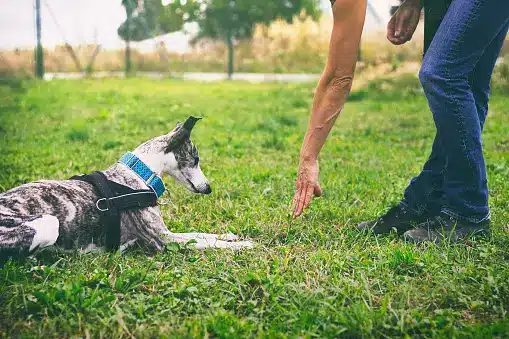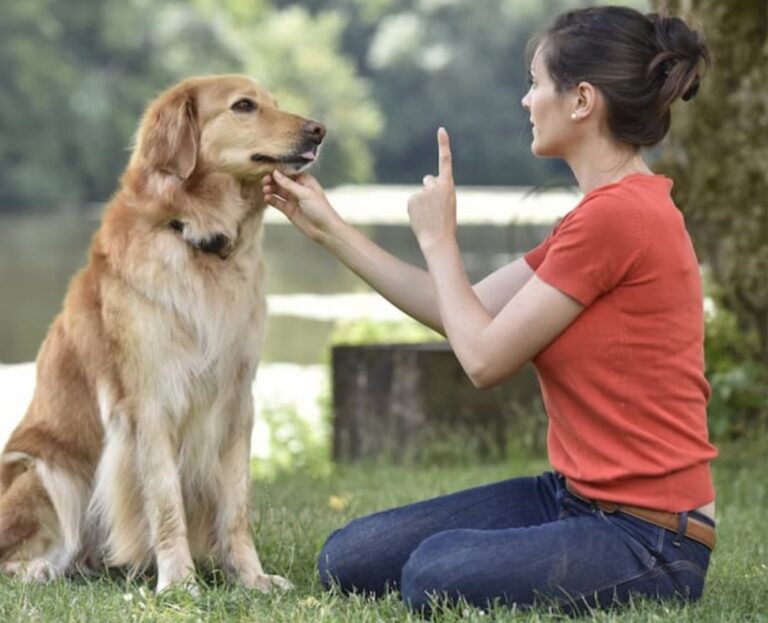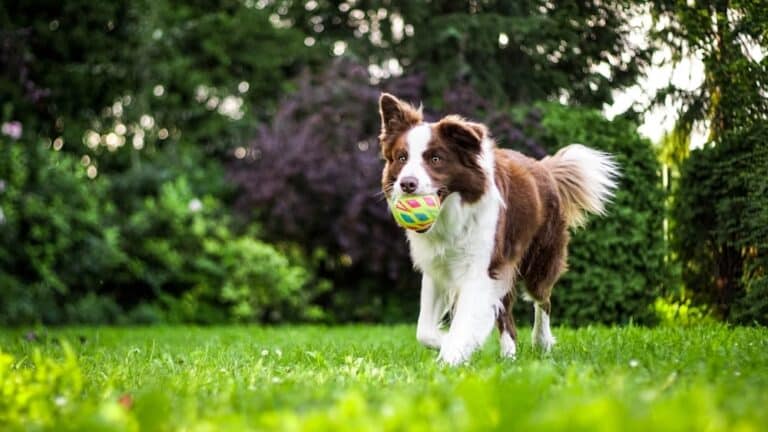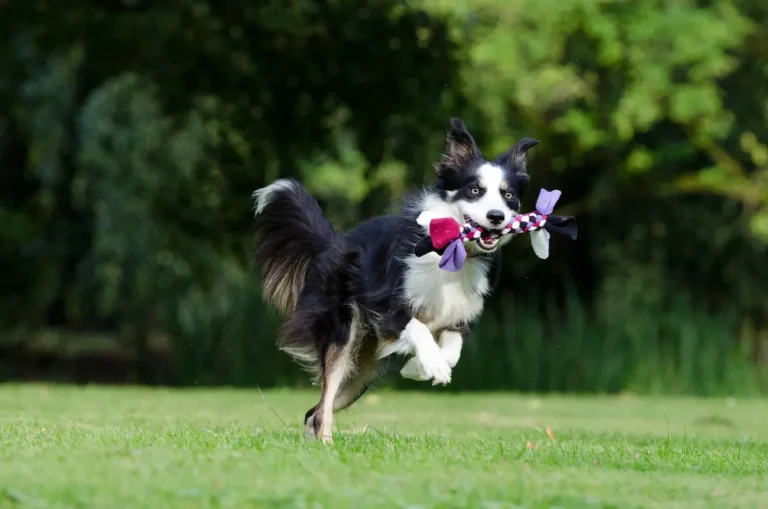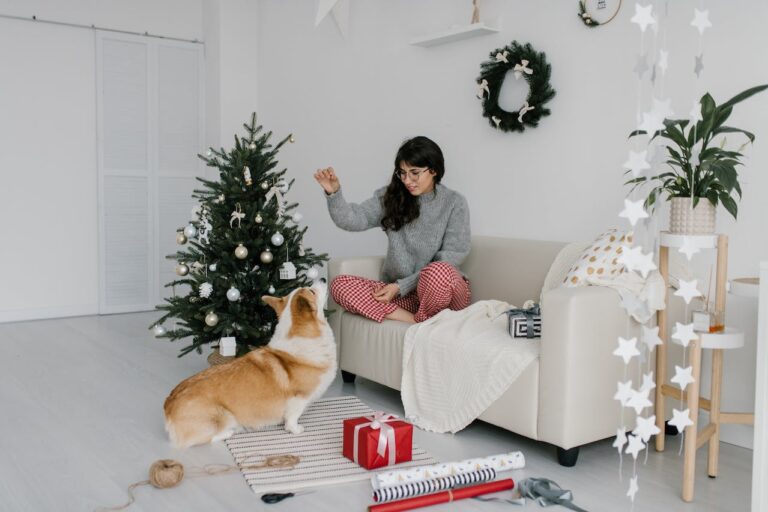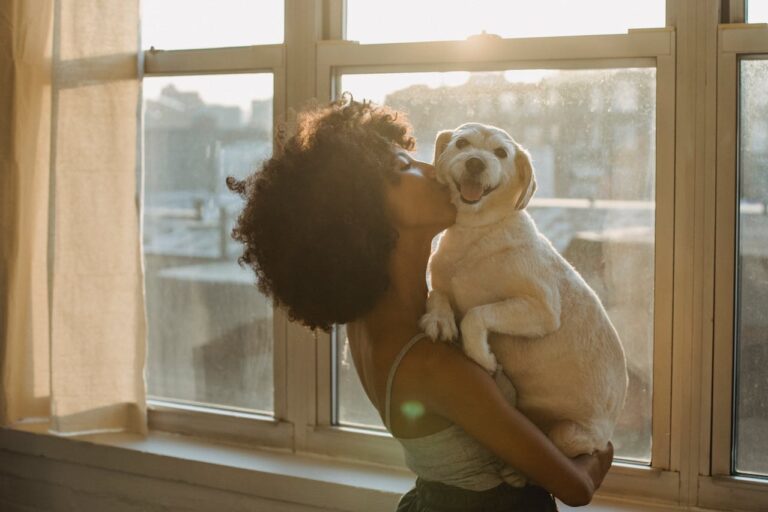Training your dog to be obedient is essential for a happy and harmonious relationship between you and your furry friend. Effective dog training not only makes your dog well-behaved but also strengthens the bond between you two. Here are ten proven dog obedience techniques that can help you achieve this goal.
Technique 1: Positive Reinforcement
Positive reinforcement is a highly effective technique for training dogs and promoting good behavior. This method involves rewarding your dog for displaying desired behaviors, which encourages them to repeat those behaviors in the future. By focusing on positive reinforcement, you can create a strong bond with your canine companion and make the training process enjoyable for both of you.
Reward-based training
Reward-based training is a fundamental aspect of positive reinforcement. It involves providing your dog with a reward, such as treats, praise, or playtime, immediately after they exhibit the desired behavior. By associating the behavior with a positive outcome, your dog will understand that performing the desired action leads to a pleasant experience.
Reward-based training works best when the rewards are meaningful to your dog. It’s important to choose treats or rewards that your dog finds highly motivating. This could be a favorite toy, a special treat, or even a belly rub. Using rewards that your dog truly values will increase their motivation to learn and obey.
Clicker training
Clicker training is a popular and effective method of positive reinforcement. It involves using a small handheld device called a clicker to mark the desired behavior, followed by an immediate reward. The clicker serves as a signal to communicate to your dog that they have performed the correct action and will be rewarded.
To start clicker training, you need to associate the sound of the clicker with a reward. Click the device and immediately provide a treat or praise. Repeat this association several times until your dog understands that the clicker signifies something positive. Once your dog grasps this concept, you can use the clicker to mark and reinforce desired behaviors during training sessions.
Treat training
Treat training is another effective positive reinforcement technique that utilizes food rewards to encourage obedience. This method involves using small, bite-sized treats to motivate and reward your dog for following commands or displaying desired behaviors.
When using treat training, it’s important to choose treats that are both enticing and easily manageable. You want to ensure that the treats are small enough for your dog to consume quickly, as you will be using them frequently during training sessions. Additionally, opt for treats that are healthy and appropriate for your dog’s dietary needs.
During training, present the treat as a reward immediately after your dog successfully performs the desired behavior. This will reinforce the connection between the action and the positive outcome. Gradually, you can reduce the frequency of treat rewards as your dog becomes more consistent in obeying commands.
In conclusion, positive reinforcement is a powerful technique for effective dog training. Reward-based training, clicker training, and treat training are all valuable tools within the realm of positive reinforcement. By utilizing these techniques, you can establish a strong foundation of obedience and create a harmonious relationship with your furry friend.
Technique 2: Clicker Training
Introduction to clicker training
Clicker training is a popular method used in dog training to reinforce positive behavior. It involves the use of a small handheld device called a clicker, which emits a distinct clicking sound. The sound serves as a marker to signal to the dog that it has performed the desired behavior correctly. Clicker training is based on the principles of operant conditioning, where the dog learns to associate the sound of the clicker with a reward, such as treats or praise.
Steps for clicker training
- Get familiar with the clicker: Before starting clicker training, it’s important to get your dog accustomed to the sound of the clicker. Click the device a few times and immediately provide a treat or reward. Repeat this process several times until your dog associates the sound with something positive.
- Choose a target behavior: Select a specific behavior that you want to teach your dog, such as sitting or lying down. Break the behavior down into small steps to make it easier for your dog to understand and learn.
- Capture the behavior: Wait for your dog to naturally perform the desired behavior. As soon as your dog does it, click the clicker and immediately offer a reward. This helps your dog make the connection between the click and the reward.
- Add a cue: Once your dog consistently performs the behavior after the click, introduce a verbal cue or hand signal that you will use to prompt the behavior. For example, say “sit” or raise your hand in a specific way before clicking and rewarding when your dog sits.
- Shape the behavior: If your dog doesn’t naturally offer the desired behavior, you can shape it by rewarding small steps towards the behavior. For example, if you’re teaching your dog to roll over, you can initially reward for lying down on one side, then gradually reward for rolling a little bit, until your dog completes the full roll.
- Generalize the behavior: Practice the behavior in various environments and situations to help your dog understand that the cue applies in different contexts. Start with low distractions and gradually increase the difficulty level as your dog becomes more proficient.
- Fade out the clicker: Once your dog has learned the behavior and responds consistently to the cue, you can start fading out the clicker. This means gradually reducing the frequency of using the clicker and relying more on verbal praise and occasional rewards.
Benefits of clicker training
- Clear communication: Clicker training provides a clear and precise way to communicate with your dog. The sound of the clicker marks the exact moment your dog performs the desired behavior, making it easier for them to understand what they’re being rewarded for.
- Positive reinforcement: Clicker training is a positive reinforcement technique, which means it focuses on rewarding desired behaviors rather than punishing unwanted behaviors. This creates a positive and enjoyable learning experience for your dog, strengthening the bond between you and your furry friend.
- Increased motivation: The use of a clicker as a marker for correct behavior creates a strong association between the sound and the reward. This motivates your dog to actively seek out opportunities to perform behaviors that earn them rewards, leading to faster and more effective training.
- Versatility: Clicker training can be used to teach a wide range of behaviors, from basic commands like sit and stay to more advanced tricks. It can also be used for behavior modification, helping to address issues such as separation anxiety or fear-based reactions.
- Fun and engaging: Clicker training is a fun and engaging activity for both you and your dog. It encourages active participation and stimulates your dog’s mental and physical abilities, making training sessions enjoyable for everyone involved.
In conclusion, clicker training is a valuable technique in canine obedience training. By introducing your dog to the clicker, following the steps outlined, and understanding the benefits, you can effectively utilize this method to teach your furry companion new behaviors and strengthen their overall obedience.
Technique 3: Leash Training
Introduction to leash training
Leash training is an essential aspect of effective dog training. It allows you to have control over your canine companion and ensures their safety during walks or outings. By properly introducing your dog to the leash and teaching them how to behave while on it, you can create a positive and enjoyable experience for both you and your furry friend.
Proper leash handling
Before you can start leash training your dog, it’s crucial to understand the correct way to handle the leash. Here are some important guidelines to follow:
- Choose the right leash: Select a leash that suits your dog’s size and strength. A sturdy and comfortable leash with a length of around 4 to 6 feet is generally recommended.
- Hold the leash properly: Hold the leash with a relaxed grip, keeping it firm enough to maintain control but not too tight to cause discomfort. Avoid wrapping the leash around your hand or wrist, as it can lead to injuries if your dog pulls suddenly.
- Maintain a neutral position: Stand in a neutral position with your shoulders relaxed and avoid leaning forward or backward. This posture will help you maintain balance and control while walking your dog.
- Use positive reinforcement: Reward your dog with treats or praise when they exhibit good leash manners. This positive reinforcement will encourage them to continue behaving well during walks.
Teaching leash manners
Teaching your dog proper leash manners is essential for a pleasant walking experience. Here are some useful tips to help you achieve this:
- Start indoors: Begin by introducing your dog to the leash indoors, where there are fewer distractions. Allow them to sniff and investigate the leash while rewarding them with treats and praise.
- Gradual leash introduction: Attach the leash to your dog’s collar or harness and let them drag it around for short periods within the house or a secure backyard. This helps them get accustomed to the sensation of being connected to the leash.
- Positive association: Associate the leash with positive experiences by taking your dog for short walks in a familiar and low-stimulus environment. Reward them for walking calmly beside you and for not pulling on the leash.
- Encourage loose leash walking: Teach your dog to walk on a loose leash by stopping whenever they start pulling and only continuing when the leash is slack. Reward them for walking beside you without tension on the leash.
- Practice patience and consistency: Leash training takes time and patience. Be consistent with your training sessions and gradually increase the difficulty by introducing more distractions and different environments.
By following these proper leash handling techniques and teaching your dog good leash manners, you can establish a strong foundation for effective leash training. Remember to always be patient, positive, and consistent with your training efforts, and soon you’ll have a well-behaved and enjoyable walking companion.
Technique 4: Crate Training
Crate training is a highly effective technique for dog obedience that provides numerous benefits for both the dog and the owner. Introducing your canine companion to a crate can help create a safe and comfortable space for them while aiding in their overall obedience training. Here, we will explore the benefits of crate training, how to introduce the crate to your dog, and some valuable crate training tips.
Benefits of Crate Training
Crate training offers several advantages that contribute to the success of dog training. Understanding these benefits will emphasize the importance of incorporating crate training into your dog’s obedience routine:
- Safe Haven: The crate becomes a secure and comforting den-like space for your dog, where they can retreat to relax and feel protected. This sense of security can alleviate anxiety and stress.
- Housebreaking Aid: Dogs naturally avoid soiling their living spaces. By using a crate, you can encourage your dog to develop bladder and bowel control, making housebreaking faster and easier.
- Prevention of Destructive Behavior: When unsupervised, dogs may engage in destructive behaviors like chewing furniture or shoes. A crate provides a controlled environment that prevents such behaviors and protects both your belongings and your dog from potential harm.
- Travel Convenience: Crate training enables easy and safe transportation of your dog. Whether it’s a short car ride or a long journey, having a well-trained dog in a crate ensures a stress-free travel experience.
Introducing the Crate
Introducing your dog to the crate requires patience and a positive approach. Follow these steps to help your dog associate the crate with a positive experience:
- Choose the Right Size: Select a crate that allows your dog to stand, turn around, and lie down comfortably. A crate that is too small can be uncomfortable, while a crate that is too spacious may not feel secure.
- Make it Inviting: Place soft bedding, such as a blanket or a dog bed, inside the crate to make it cozy. Adding your dog’s favorite toys and treats will create a positive association with the crate.
- Open Door Policy: Initially, keep the crate door open and allow your dog to explore it at their own pace. Encourage them to enter the crate by placing treats or toys near the entrance.
- Feeding Time: Associate the crate with positive experiences by feeding your dog inside the crate. Gradually move their food bowl towards the back of the crate to encourage them to enter fully.
- Encourage Napping: Dogs naturally seek out comfortable spots for napping. Utilize this instinct by placing the crate in a quiet and peaceful area, encouraging your dog to nap inside.
Crate Training Tips
To ensure successful crate training, consider the following tips:
- Positive Reinforcement: Always reward your dog with praise, treats, or playtime when they willingly enter or remain in the crate. This reinforces the idea that the crate is a desirable and safe space.
- Gradual Progression: Start with short periods of crate time and gradually increase the duration as your dog becomes more comfortable. This gradual progression prevents your dog from feeling overwhelmed or anxious.
- Avoid Punishment: Never use the crate as a form of punishment. It should always be associated with positive experiences. Using the crate as a place of punishment can create anxiety and resistance towards crate training.
- Patience and Consistency: Crate training takes time and consistency. Be patient with your dog and maintain a consistent routine to help them understand and adapt to the crate.
By implementing crate training as part of your dog’s obedience program, you can foster a well-behaved and content canine companion. Remember to focus on the benefits of crate training, introduce the crate gradually and positively, and follow the provided tips to ensure a successful training experience.
Technique 5: Socialization
Importance of socialization
Socialization is a crucial aspect of dog training that should not be overlooked. It involves exposing your furry friend to various people, animals, environments, and experiences from an early age. Proper socialization helps your dog develop good behavior, confidence, and adaptability in different situations.
Exposing your dog to new experiences
Introducing your dog to new experiences is an essential part of socialization. By exposing them to different environments, sounds, smells, and sights, you can help them become comfortable and well-behaved in various situations. This includes taking them to parks, busy streets, pet-friendly events, and even allowing them to interact with other well-behaved dogs.
Socialization techniques
Here are some effective techniques to socialize your dog:
- Positive Reinforcement: Use treats, praises, and rewards to encourage and reinforce good behavior during socialization experiences. This will help your dog associate positive feelings with new situations and people.
- Gradual Exposure: Start by exposing your dog to less overwhelming situations and gradually increase the level of difficulty. For example, begin by introducing them to calm and friendly dogs before moving on to more energetic or larger ones.
- People Interaction: Encourage your dog to interact with different people, including strangers, children, and individuals of diverse ages and backgrounds. Teach them to remain calm and friendly during these interactions.
- Environmental Exposure: Expose your dog to various environments, such as parks, beaches, shopping centers, and busy streets. This will help them become familiar with different sights, sounds, and smells, reducing the chances of fear or anxiety in new places.
- Training Classes: Enroll your dog in training classes or obedience schools where they can socialize with other dogs under professional supervision. This will help them learn proper behavior and social cues while interacting with their peers.
Remember, consistency and patience are key during socialization. Ensure that each experience is positive and rewarding for your dog. With proper socialization, you can raise a well-rounded, confident, and well-behaved canine companion.
Technique 6: Basic Commands
Teaching sit, stay, and come
Teaching your dog basic commands like sit, stay, and come is essential for effective dog training. These commands form the foundation of obedience and help establish a strong bond between you and your furry friend.
Sit
To teach your dog to sit, start by holding a treat close to their nose and slowly move it upwards. As their head goes up, their bottom will naturally lower into a sitting position. Once they are in a sitting position, say “sit” and reward them with the treat. Repeat this process several times until your dog associates the word “sit” with the action.
Stay
The stay command is crucial for keeping your dog in one place when necessary. Begin by having your dog sit in front of you. Open your palm towards their face and say “stay” while taking a step back. If your dog remains in the sitting position, reward them with praise and a treat. Gradually increase the distance and duration of the stay command over time, always rewarding your dog for successfully following the command.
Come
The come command is essential for calling your dog back to you. Start by attaching a long leash to your dog’s collar. Crouch down, open your arms, and say “come” in a friendly tone. Gently tug on the leash to guide your dog towards you. Once they reach you, reward them with praise and treats. Practice this command in a safe and secure environment until your dog responds reliably.
Using hand signals
In addition to verbal commands, using hand signals can enhance your dog’s understanding and responsiveness. Hand signals can be particularly useful in situations where verbal commands may be difficult to hear or when training in noisy environments. To introduce hand signals, pair a specific hand motion with each command. For example, for the sit command, hold your hand up with the palm facing upwards. Consistently use these hand signals along with the verbal commands, gradually phasing out the verbal cues as your dog becomes more proficient in responding to the hand signals.
Reinforcing commands
Consistency is key when reinforcing commands during dog training. Ensure that you use the same cues and signals each time you give a command to avoid confusion. Additionally, make sure to reward your dog with treats, praise, or play whenever they successfully follow a command. Positive reinforcement encourages your dog to repeat the desired behavior and strengthens the bond between you and your pet.
Remember, teaching basic commands takes time and patience. Practice these techniques regularly in short sessions to help your dog master sit, stay, and come commands. With consistent training and positive reinforcement, your dog will become a well-behaved and obedient companion.
Technique 7: Desensitization
Desensitization is a powerful technique used in canine obedience training to help dogs overcome their fears and anxieties. By gradually exposing your dog to the triggers that cause these negative reactions, you can help them become more comfortable and confident in various situations. This technique involves identifying triggers, gradually exposing your dog, and ensuring positive experiences during the desensitization process.
Identifying Triggers
The first step in desensitization is to identify the triggers that cause fear or anxiety in your dog. These triggers can vary from loud noises, such as thunder or fireworks, to certain objects, people, or situations. Observe your dog’s behavior closely and take note of what situations or stimuli seem to trigger a negative response. This could include barking, panting, trembling, or trying to escape.
Gradually Exposing Your Dog
Once you have identified the triggers, it’s time to gradually expose your dog to them in a controlled and safe environment. Start with a low-intensity version of the trigger and slowly increase the exposure over time. For example, if your dog is afraid of strangers, start by having a calm and familiar friend visit your home. Gradually introduce more unfamiliar people, ensuring that each interaction is positive and stress-free for your dog.
Positive Experiences During Desensitization
During the desensitization process, it is crucial to create positive experiences for your dog. This helps them associate the previously feared trigger with something pleasant and enjoyable. Use treats, praise, and rewards to reinforce good behavior and provide a sense of security. For instance, if your dog is afraid of thunder, play calming music while giving them treats or engage them in a fun activity they enjoy to distract them from the noise.
Remember to be patient and understanding throughout the desensitization process. Each dog is unique, and progress may vary. Gradual exposure and positive reinforcement will help your dog build confidence and overcome their fears. With time and consistency, you’ll witness the remarkable transformation as your dog becomes more comfortable and resilient in the face of previously anxiety-inducing triggers.
By incorporating desensitization into your dog training routine, you can help your furry companion lead a happier and more balanced life.
Technique 8: Behavior Shaping
Understanding shaping behavior
Behavior shaping is a powerful technique used in canine obedience training to teach dogs complex commands and behaviors. It involves breaking down a desired behavior into smaller, more manageable steps and gradually shaping the dog’s behavior towards the desired outcome.
By understanding shaping behavior, dog owners and trainers can effectively communicate with their dogs and achieve remarkable results. Shaping behavior is based on the principle of positive reinforcement, where dogs are rewarded for successfully completing each step towards the desired behavior.
Using shaping for complex commands
Shaping behavior is particularly useful when teaching dogs complex commands that cannot be easily taught through traditional training methods. For example, if you want to teach your dog to open a door, you can start by rewarding them for simply approaching the door. Then, gradually reward them for touching the door handle, pushing the door, and eventually opening it fully.
By using shaping techniques, dogs learn to associate each step with a positive outcome, making it easier for them to understand and perform complex commands. This method also enhances their problem-solving skills and encourages independent thinking.
Rewarding small increments of desired behavior
One of the key principles of behavior shaping is rewarding small increments of desired behavior. Instead of waiting for the dog to perform the entire command perfectly, trainers reward and reinforce any behavior that moves them closer to the desired outcome.
For instance, if you are training your dog to sit on command, you can reward them for simply bending their knees or lowering their hindquarters slightly. As they begin to understand that these behaviors lead to rewards, they will naturally progress towards the complete sitting position.
By rewarding small steps, dogs stay motivated and engaged in the training process. This positive reinforcement strengthens the bond between the dog and the trainer and makes the learning experience enjoyable for both.
In conclusion, behavior shaping is a valuable technique in canine obedience training. By understanding the concept of shaping behavior, utilizing it for complex commands, and rewarding small increments of desired behavior, trainers can effectively train their dogs to perform a wide range of behaviors and commands.
Technique 9: Distraction Training
Distraction training is a crucial aspect of effective dog training. By gradually introducing distractions, maintaining focus during distractions, and rewarding calm behavior amidst distractions, you can teach your canine companion to remain obedient even in challenging situations.
Introducing distractions gradually
When training your dog, it is important to gradually introduce distractions. Start with low-level distractions, such as mild noises or minimal movements, and gradually increase the intensity as your dog becomes more comfortable. By doing so, you can build their tolerance and teach them to remain focused on your commands despite external stimuli.
To introduce distractions gradually, begin by incorporating one distraction at a time during training sessions. For example, if you are teaching your dog to sit, have someone walk by or make a gentle noise nearby. If your dog maintains their focus and obeys the command, reward them with praise and treats. Repeat this process with different distractions, ensuring that your dog remains responsive and attentive.
Maintaining focus during distractions
During distraction training, it is essential to teach your dog how to maintain focus amidst various stimuli. This skill is particularly useful in real-life situations where distractions are inevitable. By practicing focus exercises, you can help your dog develop the ability to ignore distractions and concentrate on your instructions.
One effective exercise to improve focus is the “leave it” command. Start by holding a treat in your closed hand and presenting it to your dog. When they show interest in the treat, firmly say “leave it” and close your hand. Only when your dog diverts their attention away from the treat and makes eye contact with you, should you reward them with a different treat or praise. Gradually increase the difficulty by introducing distractions while practicing the “leave it” command. This will strengthen your dog’s focus and impulse control.
Rewarding calm behavior amidst distractions
Rewarding calm behavior amidst distractions is an important part of distraction training. By reinforcing your dog’s ability to remain calm and obedient in challenging situations, you are encouraging positive behavior and strengthening their training foundation.
When your dog exhibits calm behavior amidst distractions, reward them immediately with praise, treats, or a preferred toy. Reinforce the idea that remaining calm leads to positive outcomes. For example, if you are training your dog to stay calm when encountering other dogs, reward them when they remain composed and avoid reacting aggressively or anxiously. Over time, your dog will associate remaining calm with positive reinforcement, making them more likely to exhibit calm behavior in future distractions.
In conclusion, distraction training plays a vital role in canine obedience. By gradually introducing distractions, maintaining focus during distractions, and rewarding calm behavior amidst distractions, you can equip your dog with the skills needed to be obedient and well-behaved in any situation. Remember to be patient, consistent, and positive throughout the training process to achieve the best results.
Technique 10: Consistency and Patience
Importance of consistency in training
Consistency is key when it comes to training your dog. Dogs thrive on routine and repetition, so it’s important to establish consistent rules and expectations for them to follow. By being consistent in your training methods, you are providing clear guidance and structure for your dog, which will help them understand what is expected of them.
Consistency also helps to reinforce good behavior and discourage bad behavior. When you consistently reward your dog for positive actions and ignore or redirect negative behaviors, they will learn what is acceptable and what is not. This will ultimately lead to a well-behaved and obedient dog.
Being patient with your dog
Patience is another crucial aspect of effective dog training. Dogs, like humans, learn at their own pace and may require more time to grasp certain commands or behaviors. It’s important to remember that every dog is different and may respond differently to various training techniques.
When working with your dog, it’s important to remain patient and understanding. Avoid getting frustrated or angry if your dog doesn’t immediately obey a command. Instead, take a step back and assess the situation. Consider whether you need to adjust your training approach or break down the command into smaller, more manageable steps for your dog to understand.
Remember that dogs thrive on positive reinforcement, so be patient and consistent in rewarding their efforts and progress. With time and patience, your dog will gradually improve their obedience and understanding of the training.
Staying motivated during training
Training a dog can be a challenging and time-consuming process. It’s not uncommon to feel demotivated or overwhelmed at times, especially if your dog is struggling to grasp certain techniques or behaviors. However, it’s important to stay motivated and committed to the training process.
One way to stay motivated is by setting realistic goals for yourself and your dog. Break down the overall training objectives into smaller milestones that are achievable within a reasonable timeframe. Celebrate each small victory and use it as motivation to keep going.
Additionally, try to make the training sessions enjoyable for both you and your dog. Incorporate fun activities, rewards, and positive reinforcement techniques to keep your dog engaged and excited about the training. This will not only make the process more enjoyable for you but also help maintain your enthusiasm and motivation.
Remember, consistency and patience go hand in hand with staying motivated. By staying consistent in your training efforts, remaining patient with your dog’s progress, and finding ways to stay motivated, you will set yourself and your dog up for success in achieving effective canine obedience.
These 10 canine obedience techniques provide a comprehensive guide for effective dog training. By incorporating positive reinforcement, consistency, and patience, dog owners can develop a strong bond with their pets and promote good behavior. Each technique offers unique benefits and can be tailored to suit individual dogs and their specific needs. Whether it is teaching basic commands or addressing behavior issues, these techniques serve as valuable tools for successful training. By implementing these strategies and investing time and effort into training, dog owners can ensure a well-behaved and happy canine companion.

